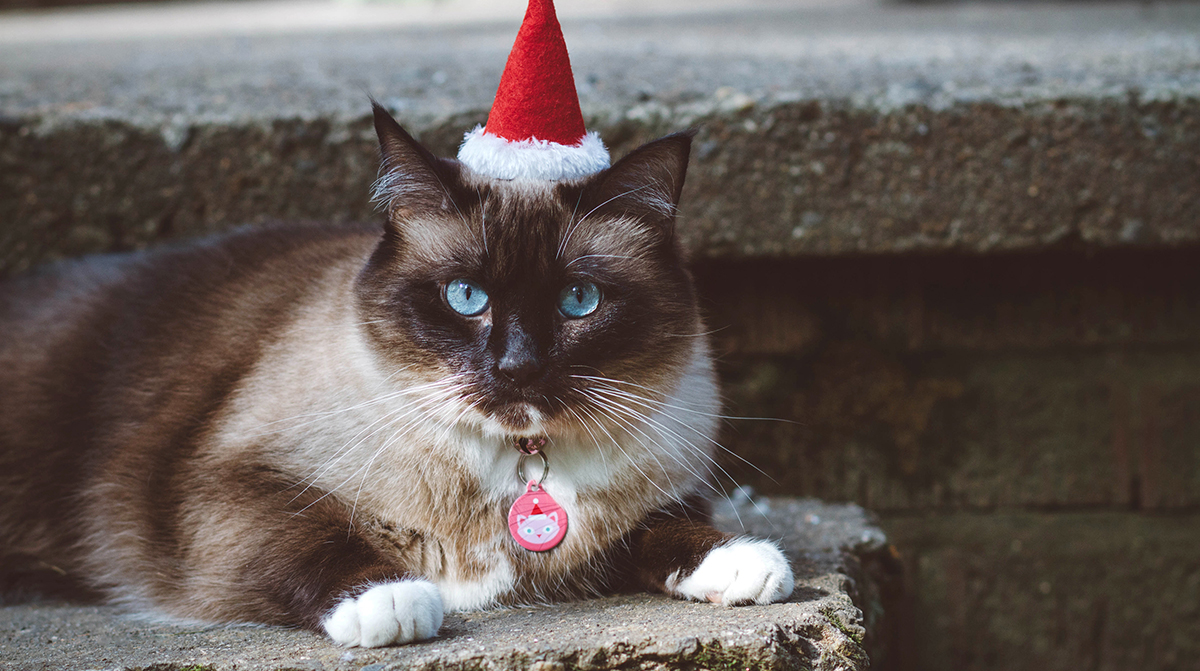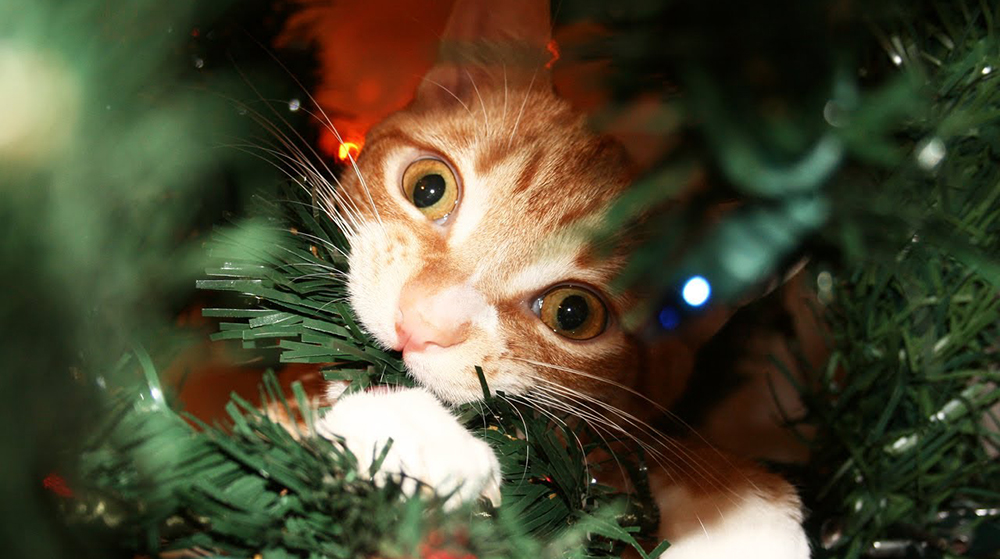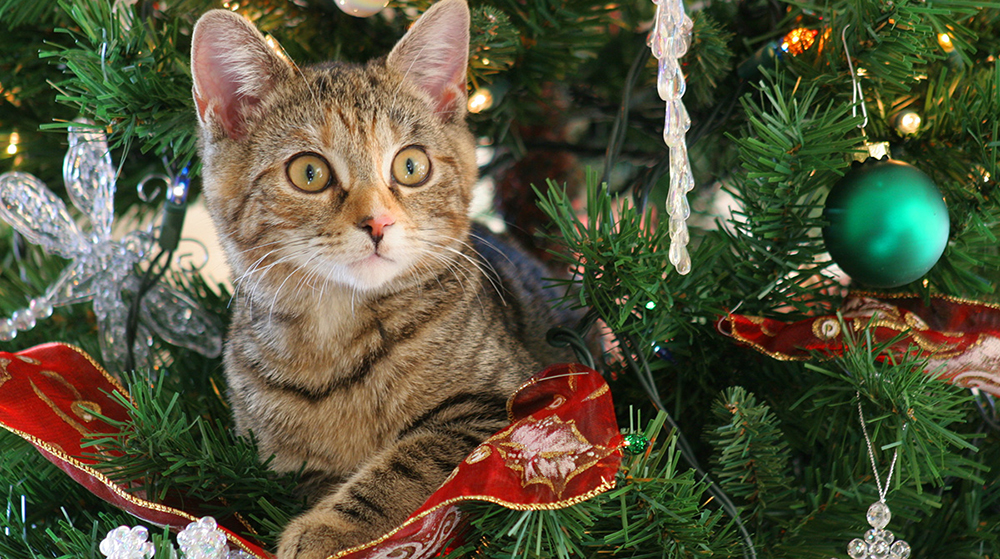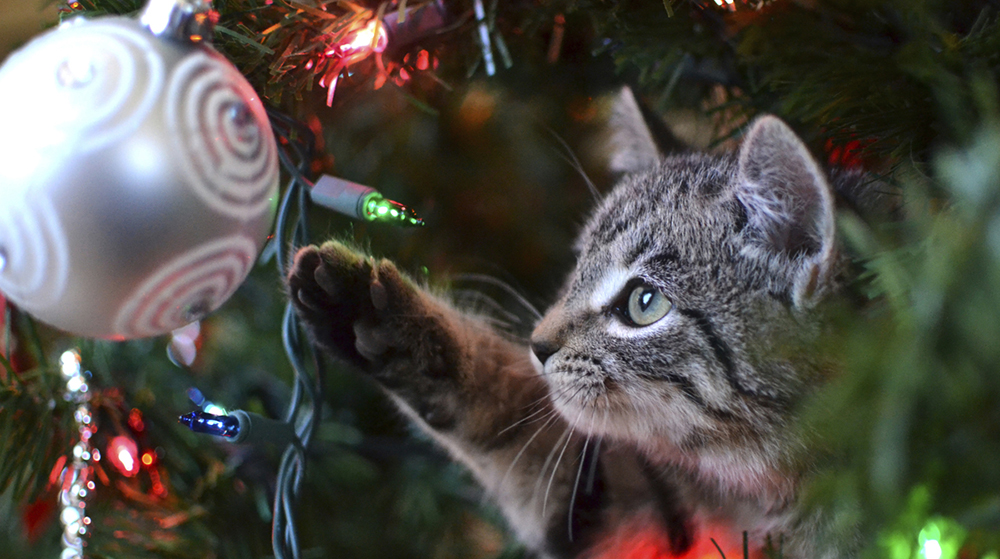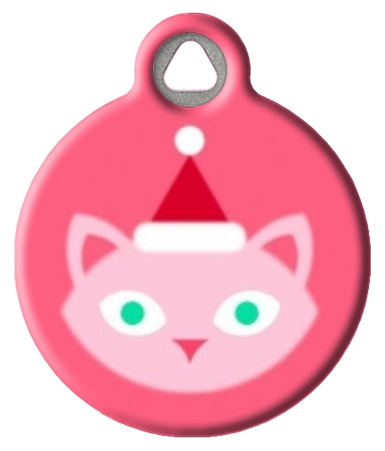If you’ve seen the film “Christmas Vacation,” surely you remember the squirrel-christmas-tree scene. For those who haven’t seen this holiday flick (or have somehow forgotten this moment), here is a quick synopsis:
A tree is cut down outside and brought indoors (with a squirrel still living in it). The squirrel makes squeaking sounds within the tree. Humans hear the squeaking and realize it is coming from the tree, so they investigate. Moments later, the squirrel flies out and chaos ensues – it is hilarious!
But although it is easy to spot squirrels in trees (outdoors) on almost any given day, the animal you will most likely catch creeping on your holiday tree is the family cat. And there are plenty of photos and stories to prove it.
Cats and Christmas Trees: Why?
We can only guess why our feline friends take such a liking to fake and real Christmas trees. Obviously these towering, grippable forms encourage their love of climbing, but that does not explain why they also eat ornaments and branches, or simply ravage the entire thing.
Some argue that cats must think that they are outdoors. Others insist it has everything to do with the shiny, dangly, often animal-like ornaments triggering their hunting instincts.
With all of these theories in mind, here are a few ideas for making your tree less tempting and less dangerous for the curious meowzers of the world.
How to Cat Proof Your Tree
The Tree Itself: Make the tree as uninteresting as possible. Cat experts think that drawing less attention to the tree will make Kitty less interested, especially for the first couple of days the tree is inside your home. If Kitty starts to show interest, scare her off by making loud noises or giving her a little spray of water. Hanging bells around the bottom of the tree can also act as a deterrent.
Lights: Cats are attracted to moving light, so if you must add lights to your tree, avoid blinky ones. Also, ensure that all wires are tightly fastened and difficult to grab – Kitty may try to make a meal out of them or grab hold, taking the whole tree down with her.
Gifts: Placing gifts and other barriers all the way around the tree may help discourage any climbing of the trunk. If Kitty is not easily scared off by obstacles, than you can try the opposite approach: Leave plenty of space around the tree, so she does not have any assistance getting closer or higher.
Ornaments: Slowly integrate ornaments – adding a few every day or two – so Kitty can adjust to the idea. Overall, it is best to add decorations on the high end of the tree. If you really want to adorn the entire thing, use only shatterproof ornaments. This way, if Kitty does knock them around or down, tiny slivers of glass won’t get into her pretty paws. In addition, avoid ornaments that look like birds or animals. We once heard a story about a frisky feline that climbed a Christmas tree to “save” her family from a (stuffed) mouse ornament.
Tinsel: Cats love tinsel and most other things that are wiggly and shiny. Sadly, household items, including ornaments, ribbons, and wreaths and trees (both real and fake) can be toxic to pets and also cause gastrointestinal problems when ingested. While some might find it amusing to watch Kitty spin in circles, chasing the tinsel that is hanging out of her backside, Kitty would likely perfer to not be the butt of the joke. (Pun intended.) Safety first, friends with felines!
Embrace Your Cat’s Curiosity
Cats are incredibly stubborn, independent, and curious – it’s a fact. So, don’t be discouraged if Kitty does some damage to your tree despite all of your efforts to cat proof. It’s just her nature.
